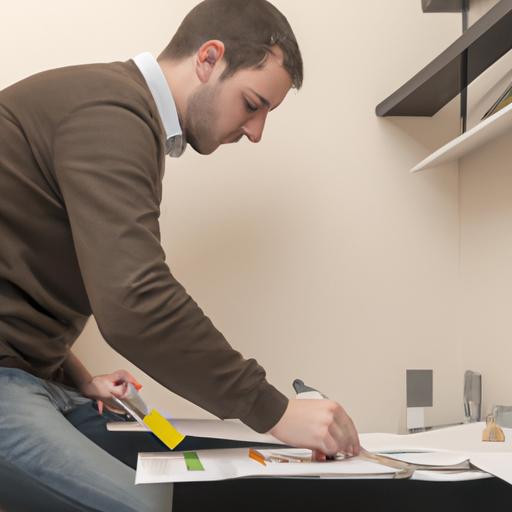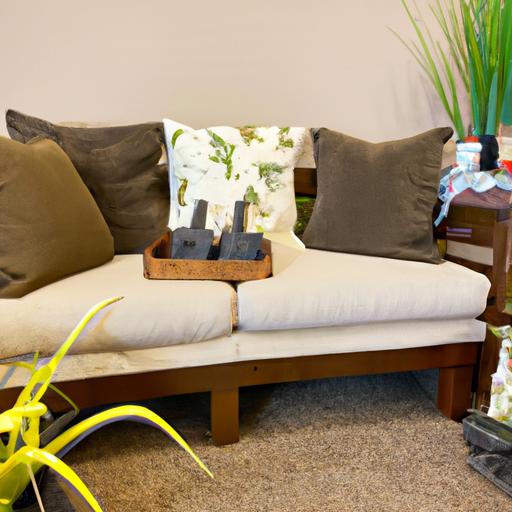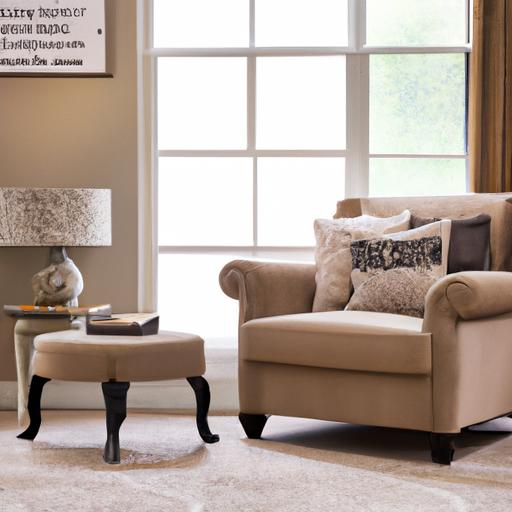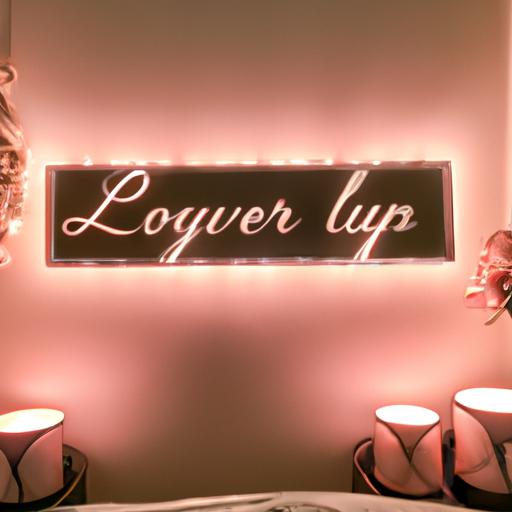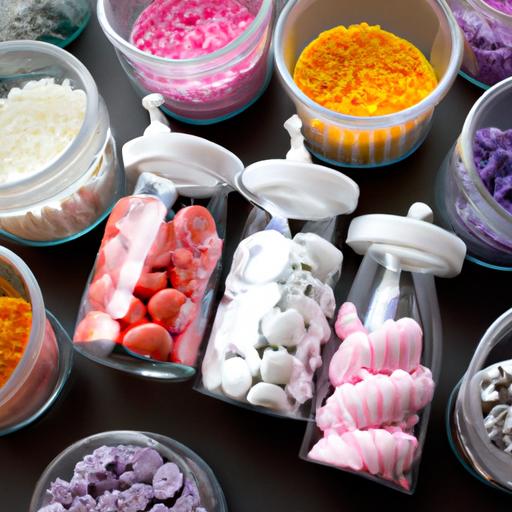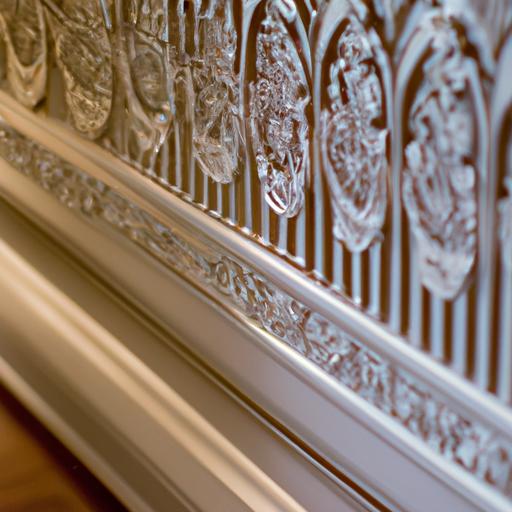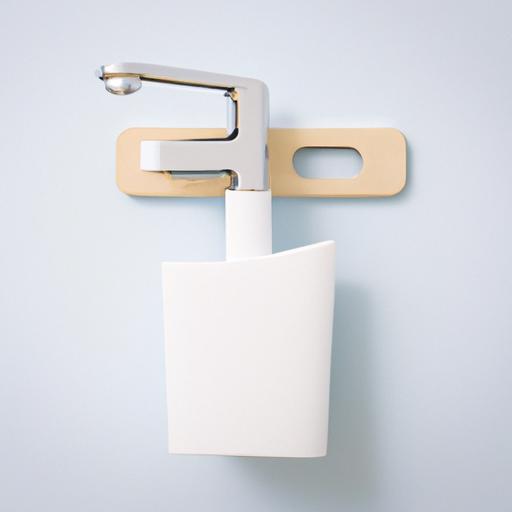Unleashing the Creative Genius: The Role of a Product Developer for Interior Decoration
Introduction
In today’s fast-paced world, interior decoration has become an art form, elevating spaces from ordinary to extraordinary. Behind the scenes, there is a key player that brings these captivating designs to life – the product developer for interior decoration. But what exactly does a product developer do? Why are they crucial in the interior decoration industry? And what can you expect from this article? Let’s dive in and explore the answers together.
A. Definition of a Product Developer for Interior Decoration
A product developer for interior decoration is a visionary professional who combines artistic flair with technical expertise to design and create innovative products that enhance the aesthetics and functionality of interior spaces. They are the masterminds behind the furniture, lighting fixtures, textiles, and other decorative elements that transform ordinary rooms into extraordinary havens.
B. Importance of a Product Developer in the Interior Decoration Industry
Imagine walking into a beautifully curated room that takes your breath away. Every element, from the furniture to the smallest decorative detail, has been thoughtfully designed to create a harmonious and visually stunning environment. This is where the expertise of a product developer shines. They play a pivotal role in shaping the overall ambiance and experience of a space, ensuring that every item complements the design concept and meets the needs and desires of the end-user.
C. Overview of the Article’s Scope and Purpose
In this comprehensive article, we will delve into the world of product developers for interior decoration. We will explore the skills and qualifications required to excel in this role, the diverse responsibilities they undertake, the challenges they face, and the tools and technologies they utilize to bring their creative visions to life. By the end, you will have a deeper understanding of the pivotal role played by product developers in the interior decoration industry and gain insights into this exciting career path. So, let’s embark on this journey together and unlock the secrets of the product developer’s realm.
Skills and Qualifications of a Product Developer for Interior Decoration
A. Creativity and Design Expertise
As a product developer for interior decoration, having a keen sense of creativity and design expertise is paramount. Your ability to think outside the box, envision unique concepts, and bring them to life is what sets you apart. You have an innate talent for understanding aesthetics, color theory, and spatial arrangements. Your creative mind allows you to conceptualize innovative products that harmonize with various interior design styles and evoke emotions.
B. Knowledge of Materials and Textiles
To excel as a product developer, you must possess a deep understanding of materials and textiles. Familiarity with different fabrics, their properties, and how they interact with light and space is essential. You know which materials are suitable for specific applications, such as upholstery, curtains, or flooring. With this knowledge, you can make informed decisions about textures, finishes, and durability, ensuring that the products you develop are not only visually appealing but also functional and long-lasting.
C. Understanding of Market Trends and Customer Preferences
To thrive in the dynamic world of interior decoration, staying up-to-date with the latest market trends and customer preferences is crucial. You have a finger on the pulse of the industry, constantly researching and analyzing consumer behavior, emerging design movements, and evolving lifestyle trends. By understanding what customers desire, you can create products that resonate with their aesthetics and aspirations, ensuring your designs are in high demand.
D. Technical Proficiency and Attention to Detail
As a product developer, you must possess technical proficiency and an unwavering attention to detail. From drafting sketches to utilizing computer-aided design (CAD) software, you are well-versed in various tools and techniques that bring your ideas to fruition. Your precision and meticulousness ensure that every aspect of your product’s design, dimensions, and functionality is flawlessly executed. You leave no room for errors, ensuring that each product meets the highest standards of quality and craftsmanship.
In the next section, we will explore the diverse roles and responsibilities of a product developer for interior decoration. Stay tuned to uncover the exciting world of bringing design concepts to life!
Roles and Responsibilities of a Product Developer for Interior Decoration
A. Conceptualizing and Designing New Products
As a product developer for interior decoration, one of your primary responsibilities is to breathe life into new product ideas. With your creative prowess, you envision and conceptualize innovative designs that align with current trends and customer preferences. You meticulously consider every detail, from the shape and form to the choice of materials, ensuring that the final product reflects the desired aesthetic and functionality.
B. Collaborating with Designers and Manufacturers
Collaboration is the heartbeat of the product development process. You work closely with designers, translating their artistic visions into tangible products. Through effective communication and a deep understanding of design principles, you bridge the gap between creativity and manufacturability. Simultaneously, you collaborate with manufacturers, providing them with detailed specifications and overseeing the production process to ensure that the final product matches the envisioned design.
C. Conducting Market Research and Analysis
To stay ahead of the curve in the ever-evolving interior decoration industry, you must be well-versed in market trends and customer preferences. You conduct thorough market research and analysis to identify gaps in the market and anticipate future demands. By understanding the target audience and their evolving needs, you can develop products that resonate with their desires, ensuring their commercial success.
D. Overseeing Product Development Process
As a product developer, you are the driving force behind the entire product development process. You coordinate and manage various stages, from ideation to prototyping, and finally, production. You ensure that each step adheres to timelines, budgetary constraints, and quality standards. Your keen eye for detail and project management skills keep the process on track, ensuring that the end result meets the high standards set forth.
E. Ensuring Quality Control and Testing
Quality is non-negotiable when it comes to interior decoration products. From durability to safety, you meticulously test and evaluate each product to ensure it meets the highest quality standards. Whether it’s conducting stress tests, analyzing material performance, or assessing compliance with industry regulations, your dedication to quality control guarantees that the end-user receives a product that exceeds expectations.
In the realm of interior decoration, the roles and responsibilities of a product developer are diverse and multifaceted. By conceptualizing new products, collaborating with designers and manufacturers, conducting market research, overseeing the development process, and ensuring quality control, you play a vital role in bringing captivating designs to life.
Challenges Faced by Product Developers in Interior Decoration
A. Balancing Aesthetics with Functionality
One of the primary challenges faced by product developers in the realm of interior decoration is striking the delicate balance between aesthetics and functionality. They must create products that not only captivate visually but also serve a practical purpose. It requires a keen eye for design, an understanding of ergonomics, and the ability to anticipate the needs and preferences of end-users. How can a product be visually stunning while also providing comfort and usability? This is a constant puzzle that product developers must solve to create products that seamlessly blend form and function.
B. Meeting Budgetary and Time Constraints
In a world driven by deadlines and budgets, product developers must navigate the intricate path of meeting both financial and time constraints. They must work within allocated budgets, ensuring that the materials, manufacturing processes, and production methods align with the desired quality and price point. Simultaneously, they must adhere to strict timelines, delivering products on schedule without compromising on design integrity. Juggling these constraints requires meticulous planning, effective communication, and a knack for finding innovative solutions within limited resources.
C. Adapting to Evolving Market Trends
The interior decoration industry is constantly evolving, with trends shifting like the changing seasons. Product developers must be proactive in keeping up with the latest market trends to ensure their creations remain relevant and desirable. They need to stay ahead of the curve, constantly researching and analyzing consumer preferences, emerging design movements, and technological advancements. Adapting to these ever-changing trends requires a flexible mindset and the ability to blend timeless design principles with contemporary influences.
D. Managing Supplier and Manufacturer Relationships
Product developers rely heavily on their relationships with suppliers and manufacturers to bring their designs to life. However, managing these relationships can present its own set of challenges. From negotiating contracts and pricing to ensuring quality control and timely production, product developers must foster strong, collaborative partnerships with suppliers and manufacturers. Effective communication, problem-solving skills, and a keen attention to detail are crucial to overcoming the hurdles that may arise during the production process.
As product developers navigate through these challenges, their passion for design and commitment to excellence drive them to create remarkable products that enhance the beauty and functionality of interior spaces.
Tools and Technologies Utilized by Product Developers in Interior Decoration
A. Computer-Aided Design (CAD) Software
In the modern era of interior decoration, product developers harness the power of advanced Computer-Aided Design (CAD) software to bring their creative visions to life. CAD software enables them to create detailed and precise 2D and 3D models of their designs, allowing for accurate visualization and efficient design iterations. With CAD software, product developers can easily experiment with different shapes, sizes, materials, and colors, saving time and resources in the design process.
B. Virtual Reality (VR) and Augmented Reality (AR) Applications
Imagine being able to step into a virtual room and experience the ambiance, textures, and lighting before it even exists physically. Virtual Reality (VR) and Augmented Reality (AR) applications have revolutionized the way product developers showcase their designs. By immersing themselves and their clients in virtual environments, they can provide a realistic and immersive experience, enabling them to make informed decisions about the design elements. VR and AR applications also facilitate effective communication between product developers, designers, and clients, ensuring everyone is on the same page throughout the design process.
C. Project Management and Collaboration Tools
Product developers often work collaboratively with designers, manufacturers, and other stakeholders throughout the product development journey. To streamline communication, track progress, and manage tasks efficiently, they rely on project management and collaboration tools. These tools provide a centralized platform for sharing files, assigning tasks, setting deadlines, and monitoring the overall progress of the project. By utilizing these tools, product developers can ensure seamless coordination, enhance productivity, and deliver exceptional results within the given timelines.
D. Material and Color Sampling Technologies
Selecting the right materials and colors is crucial for creating captivating and cohesive interior designs. To aid in this process, product developers utilize material and color sampling technologies. These technologies allow them to explore a vast array of materials, textures, and finishes, helping them make informed decisions about the visual and tactile qualities of their designs. By using material and color sampling technologies, product developers can experiment with different combinations and find the perfect harmony that brings their designs to life.
By embracing these cutting-edge tools and technologies, product developers in the interior decoration industry can push the boundaries of creativity and deliver exceptional designs that captivate and inspire.
Conclusion
As we conclude our exploration of the role of a product developer for interior decoration, we can appreciate the profound impact they have on shaping the aesthetic appeal and functionality of spaces. Their creative genius and technical prowess enable them to bring innovative products to life, elevating interior design to new heights.
Throughout this article, we have emphasized the importance of a product developer’s skills and qualifications, highlighting their ability to balance aesthetics with practicality, their market awareness, and their attention to detail. We have also shed light on the challenges they face, such as adapting to evolving trends and managing supplier relationships.
In this ever-evolving industry, it’s crucial for product developers to stay abreast of the latest design trends, materials, and technologies. Continuous learning and adaptation are key to thriving in this dynamic field. By embracing new tools and techniques, product developers can push boundaries and create exceptional designs that captivate and inspire.
Looking ahead, the future is bright for product developers in interior decoration. As the demand for unique and personalized spaces continues to grow, their expertise will become even more valuable. Whether it’s crafting bespoke furniture pieces or envisioning cutting-edge lighting solutions, the product developer’s role will remain essential in shaping the environments we inhabit.
So, whether you aspire to become a product developer or simply appreciate the artistry behind interior decoration, we hope this article has provided valuable insights into the world of product development. Remember, the product developer is the driving force that turns visions into reality, breathing life into spaces and enhancing our everyday experiences. Embrace the possibilities, unleash your creativity, and let the world be your canvas.
